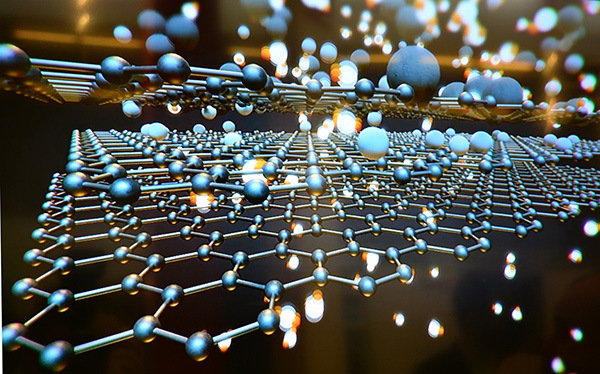A new theory explains superconductivity in twisted trilayer graphene
The study, conducted by scientists from the CSIC, lays the foundation for understanding the mechanisms of certain unconventional superconducting materials.

A study led by teams from the Spanish National Research Council (CSIC) has successfully explained the essential aspects of superconductivity (the ability of certain materials to conduct electric current without energy loss) in twisted trilayer graphene. This is achieved by rotating three layers of graphene at a very precise angle. The results, published in the journal Nature Communications, lay the groundwork for understanding how certain unconventional superconductors work, which has still eluded the understanding of the scientific community.
Five years ago, researchers from the Massachusetts Institute of Technology (MIT), led by Spanish physicist Pablo Jarillo-Herrero, discovered that it was possible to change the electronic properties of graphene by altering the rotation angle between two of its layers in a very precise and almost magical way. Graphene, a material composed of carbon atoms arranged hexagonally, thus became a superconductor capable of carrying electricity without dissipating energy, a highly peculiar phenomenon.
"Superconductivity, a phenomenon commonly observed in metals such as mercury, lithium, or titanium when subjected to low temperatures, can be understood as the pairing of electrons (in pairs called Cooper pairs) due to the interaction of electrons with the vibrations or phonons of the atomic lattice. However, in twisted graphene layers, there is evidence that superconductivity cannot be sustained by this conventional mechanism, which has hindered theoretical efforts to find an explanation," explains José González Carmona, a researcher at CSIC's Institute of Structure of Matter (IEM-CSIC).
Now, González Carmona and Tobias Stauber from the Institute of Materials Science in Madrid (ICMM-CSIC) propose a theoretical framework that includes an unconventional mechanism of superconductivity based on the electron-electron interaction itself, which is dominant in carbon materials such as graphene. This type of electron pairing confers great stability as it prevents Cooper pairs from being destroyed by certain magnetic fields, something that can happen with conventional superconductivity. "The idea we propose is groundbreaking for these carbon materials and leads to a special type of superconductivity, called Ising-type in similar two-dimensional systems," highlights González Carmona.
The scientists, who have utilized the resources of the Supercomputing Center of Galicia (CESGA) and the Drago supercomputing cluster installed at CSIC's central campus in Madrid, have used computational tools to design this method with high reliability capable of describing the total number of atoms (around 8,000 in the unit cell of the twisted trilayers). "The model we used to study the twisted graphene layers, which allowed us to capture atomic-level details, has been fundamental in finding the key to the new mechanism of superconductivity we propose," says Stauber.
Towards Room-Temperature Superconductors
Upon the discovery by Jarillo-Herrero, the scientific community observed similarities between superconductivity in twisted graphene layers and the behavior of another type of material: high-temperature superconducting copper oxides. "These materials have been defying a convincing theoretical explanation for over 30 years. In both cases, we are dealing with materials that involve new physics, so it is important to find a pathway to a new paradigm that encompasses a set of systems where it is the electron-electron interaction that dictates the properties, rather than the electron-phonon interaction," explains Stauber.
Currently, superconducting materials are still far from easily accessible temperatures, making it challenging for them to fully reach the market. Therefore, condensed matter physicists continue to seek room-temperature superconductivity.
"Our theoretical framework," González Carmona points out, "may pave the way toward understanding a new mechanism of superconductivity that escapes conventional description. This new physics is demanded by copper oxides, which were once seen as a possibility for achieving room-temperature.
-- Alda Ólafsson / CSIC Comunicación --
Photo: Graphene is a material composed of carbon atoms arranged hexagonally. / Pixabay
Scientific Reference:
J. González & T. Stauber. Ising superconductivity induced from spin-selective valley symmetry breaking in twisted trilayer graphene. Nature Communications. DOI: 10.1038/s41467-023-38250-w
Instituto de Ciencia de Materiales de Madrid (ICMM)
Sor Juana Ines de la Cruz, 3
Cantoblanco, 28049
Madrid, España
Telephone: (+34) 91 334 90 00
Email: @email
Communication Office: @email

Acknowledge the Severo Ochoa Centres of Excellence program through Grant CEX2024-001445-S/ financiado por MICIU/AEI / 10.13039/501100011033

Contacto | Accesibilidad | Aviso legal | Política de Cookies | Protección de datos